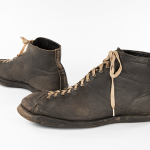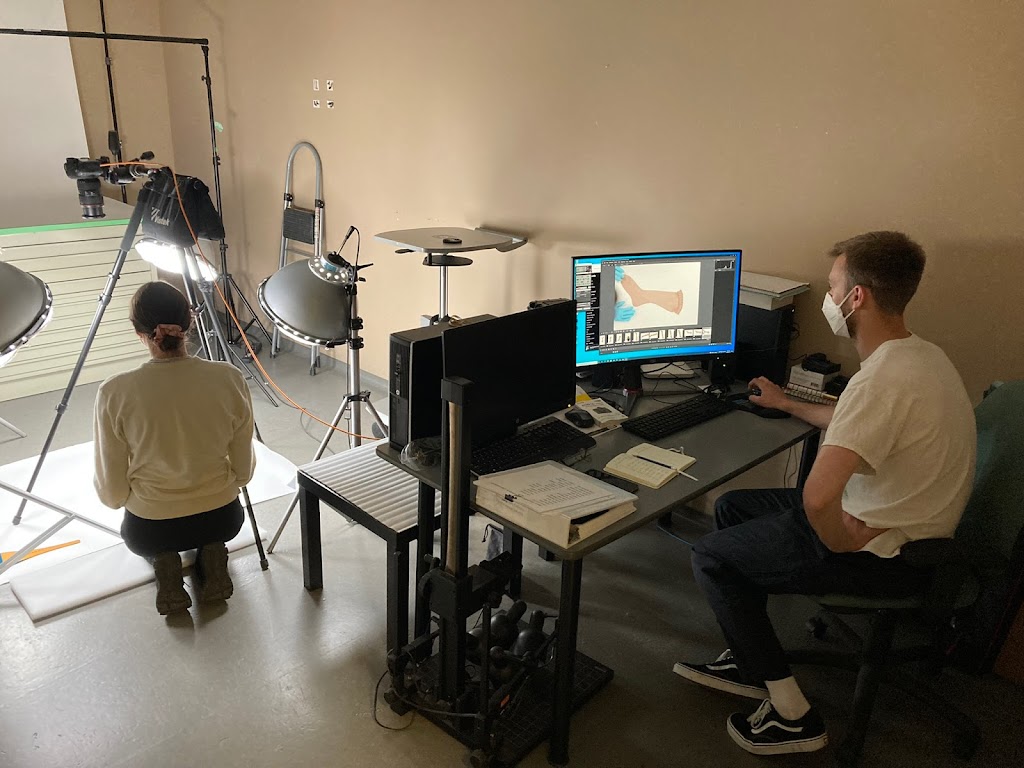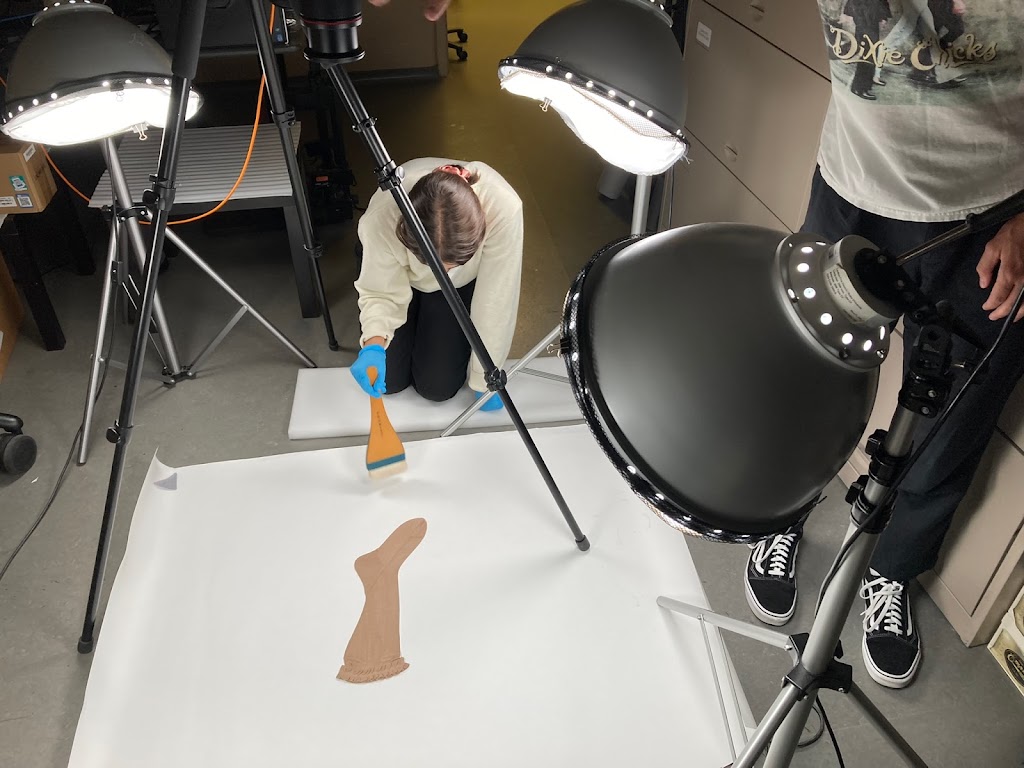This summer I am joined by Emma Pakstas and Eric Watters, both graduate students in Toronto Metropolitan University’s Photography Preservation and Collections Management program at the Creative School. Their work with me on the Digital Photography Project here at the Bata Shoe Museum is funded in part by the Young Canada Works in Heritage Organizations program, Government of Canada.
Shooting in high resolution digital format with a Canon E0S 5D Mark IV, the photos produced during the project are publishable quality, allowing the museum to expand its reach to visitors, researchers and online visitors.
After the initial two weeks of intensive training in our photography process and in artefact handling procedures, the three of us have started to work through this summer’s shot list. Starting with a large stockings and sock collection we acquired in 2018, we are now photographing the Museum’s shoe art holdings which includes works by Marion Borgelt, Marilyn Levine, and Victor Guillen, to name a few. After that segment is done, we’ll move on to shoot new acquisitions.
In this video you can see Emma gently moving this pair of black silk stockings into place on the photo backdrop.
Emma Pakstas is trained as the Artefact Handler for the project and is tasked with the safe and proper movement of artefacts. She plans the shot-order and the movement of the artefacts from the storage rooms to the photography studio where she prepares the objects for photography by removing storage mounts. After placing an artefact on the photo backdrop, she works with the Photographer to perfect the composition of the shot, moving the artefact slightly in order to capture its most photographic angle, and it’s most important features.
Eric records the details in the logbook and selects the photo for processing.
Eric Watters is trained as the Artefact Photographer for the project. His work involves lighting, composition, exposure, focus and depth of field. He sets up the photography equipment for each shot and maintains the equipment, making sure he captures each object at its best angle, allowing its most important features to be captured. He also tracks all of the shots in a journal, a helpful reference for the image processing steps that follow.
After the actual shooting is done, the team will process, resize, format and renamed the image files. The metadata for each image is collected in an excel sheet. Finally, the images will be uploaded to the Museum’s collections management database, along with the metadata. The final step for the three of us on the project team is to update the data sheet hard copies for each artefact. These data sheets are kept next to every single object in the artefact storage room, for quick reference. It’s a great system that merges the digital with the analog, making information accessibility very straightforward for the whole curatorial team.
This project has been made possible in part by the Government of Canada’s Young Canada Works in Heritage Organizations employment program.
Suzanne Petersen, Collections Manager





